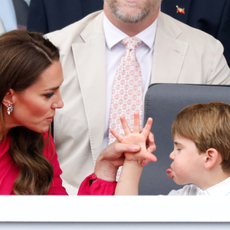What actually happens when you take a DNA test to learn about your heritage
(Sadly I'm not related to the royals though)


(Sadly I'm not related to the royals though)
My mum is Belgian and my dad is from Hong Kong but I secretly have always hoped to find out something surprising - or that would make sense with my disposition. Would I find Portuguese blood from when traders and missionaries were in Macau centuries before Hong Kong was colonised to account for my love for hot weather, custard tarts and Mediterranean cuisine? Or do I have some Scandinavian blood that would explain my obsession with Scandinavian design?
So, I decided to try not one, but three, ancestral DNA tests to see what they'd be able to tell me...
23andMe
More than simply just your ancestry composition, I was surprised to find that 23andMe offer a whole host of reports that you'll spend weeks exploring. Their five main categories are: ancestry, carrier status (to genetic conditions), genetic health risk, traits (mainly relating to your appearance) and wellness.
According to them, my ancestry composition is 50% Northwestern European (17.4% French & German, 6.1% British & Irish, and 26.0% Broadly Northwestern European) and 50% (40.4% East Asian, 0.9% Broadly East Asian, 5.8% Southeast Asian, 3.8% Broadly East Asian & Native American and 0.1% Sub-Saharan African).
They even trace back your ancestry timeline so you can see what part came when - and they connect you to DNA relatives who've also taken the test.
Living DNA
With a simple saliva swab test and permission form (signing away any responsibility for you finding out something you may not have expected), this technology analysed over 10 generations of my past, including 21 UK regions so my genetic code was seriously unlocked.
Marie Claire Newsletter
Celebrity news, beauty, fashion advice, and fascinating features, delivered straight to your inbox!
AncestryDNA
Think of this one as the Facebook of DNA testing. Not happy with just delivering you your genetic make-up, they also connect you with any of your DNA matches and DNA circles of people related to you who have also done it, in fact, one of our colleagues got contacted by a second degree cousin on the site.
And, interestingly, my ethnicity estimate came out as 41% from East Asia and 5% from Central Asia, 23% from Western Europe, 8% from Ireland - and, wahey!, 5% from Scandinavia, as well as 6% from Polynesia. And each region has details, for example, Asia East: Primarily located in: Russia, China, North Korea, South Korea, Mongolia, Myanmar (Burma), Japan, Taiwan, Philippines, Indonesia, Thailand, Laos, Cambodia, Vietnam, Singapore, Brunei, Palau - which is WAY more interesting than just saying 'Chinese.'
-
 Zendaya just dropped a huge hint about when she actually started dating Tom Holland
Zendaya just dropped a huge hint about when she actually started dating Tom HollandSurprised?
By Iris Goldsztajn
-
 Prince Louis is the one family member who can make Kate 'lose her cool,' says astrologer
Prince Louis is the one family member who can make Kate 'lose her cool,' says astrologerHe's quite cheeky
By Iris Goldsztajn
-
 Taylor Swift’s reference to this London pub has caused huge demand for merch
Taylor Swift’s reference to this London pub has caused huge demand for merchSurprise, surprise
By Iris Goldsztajn